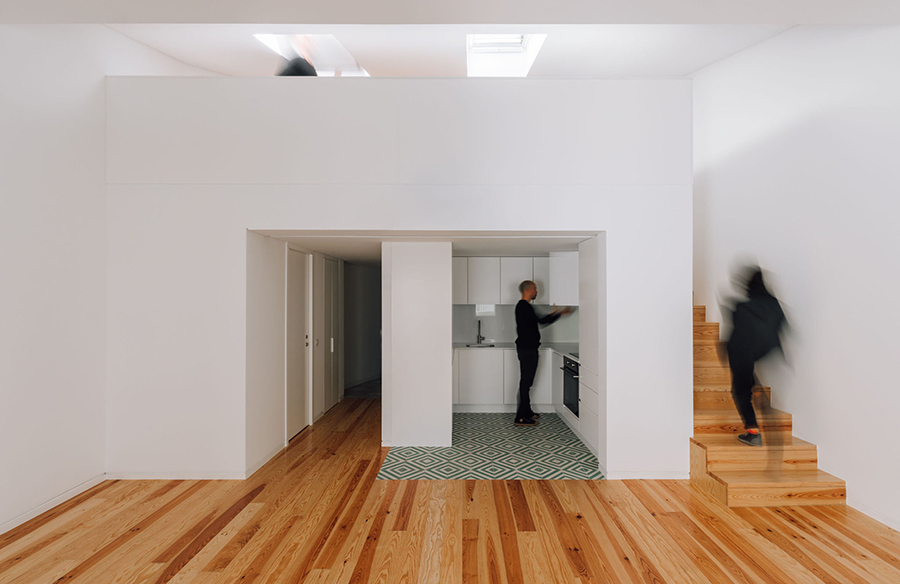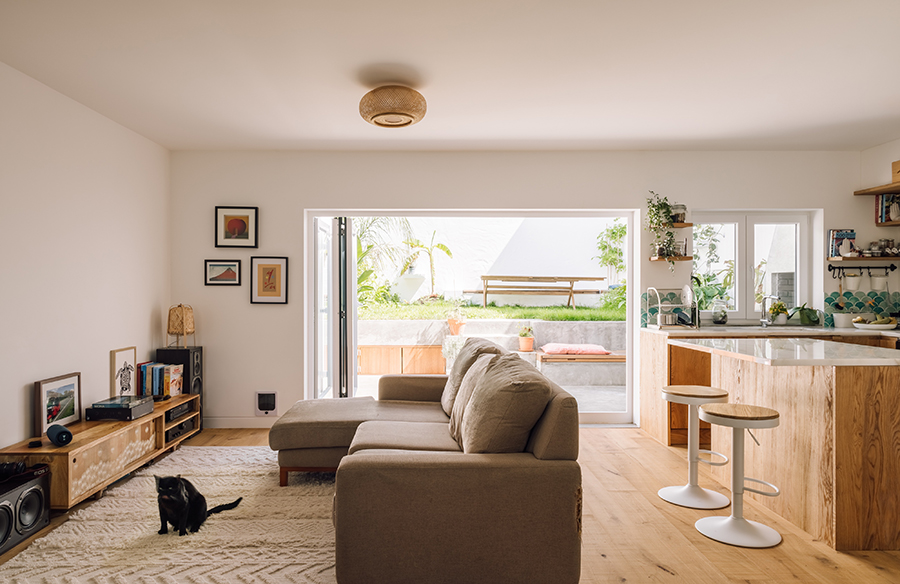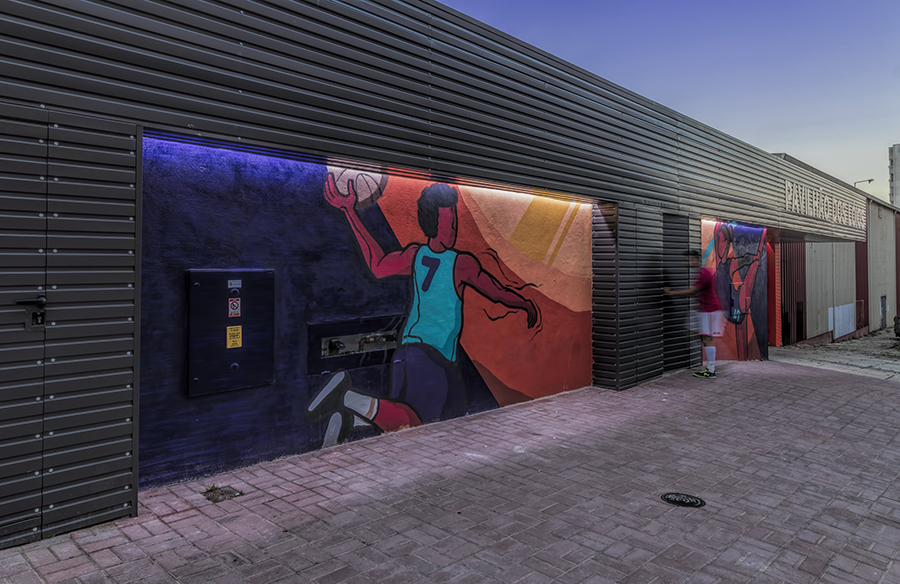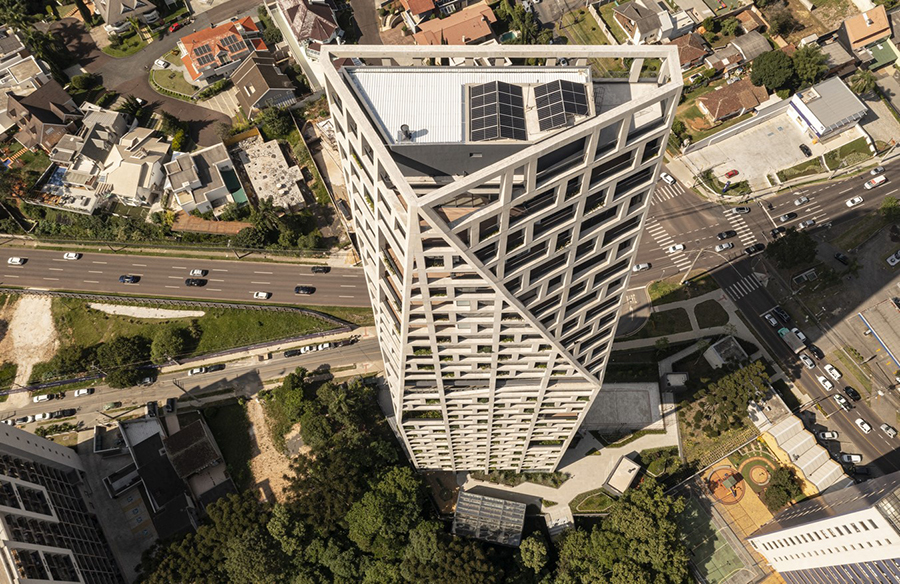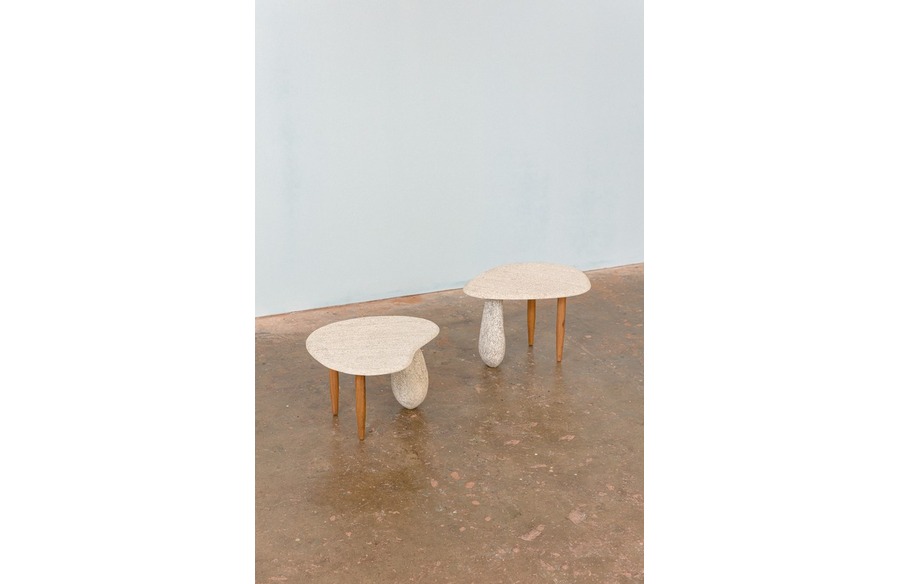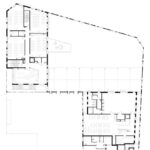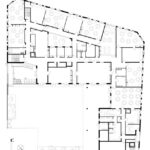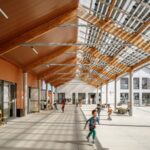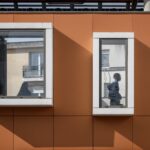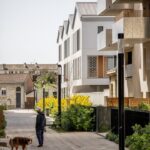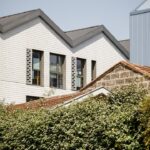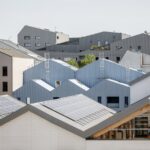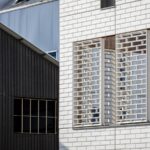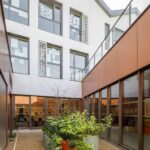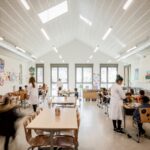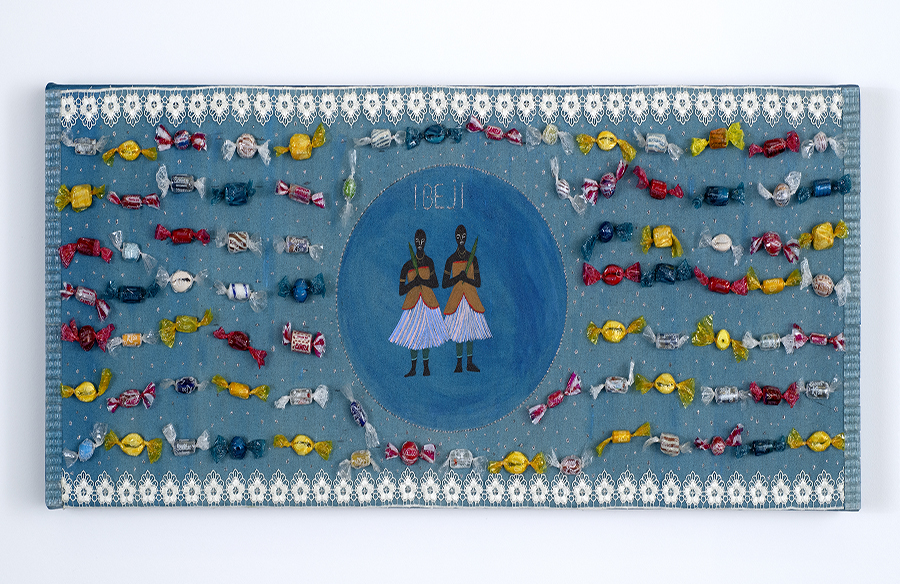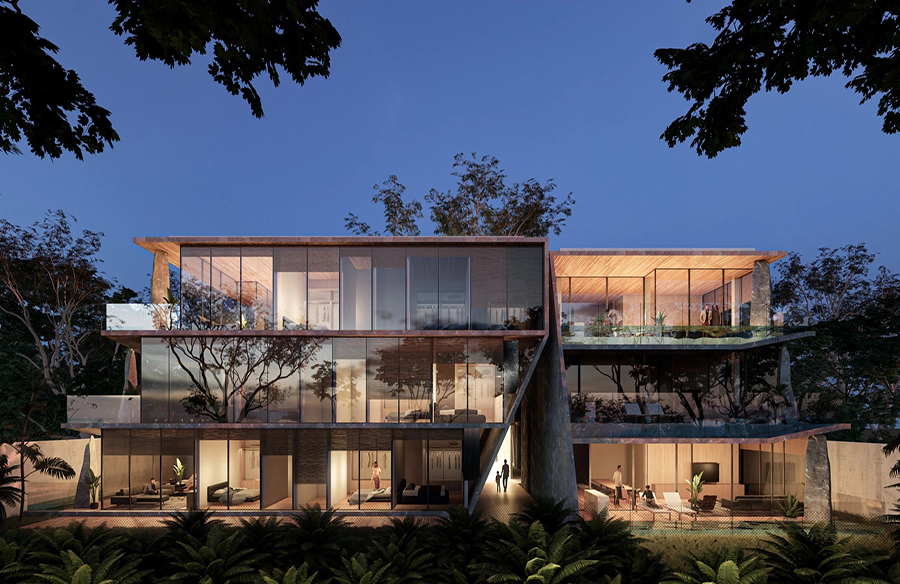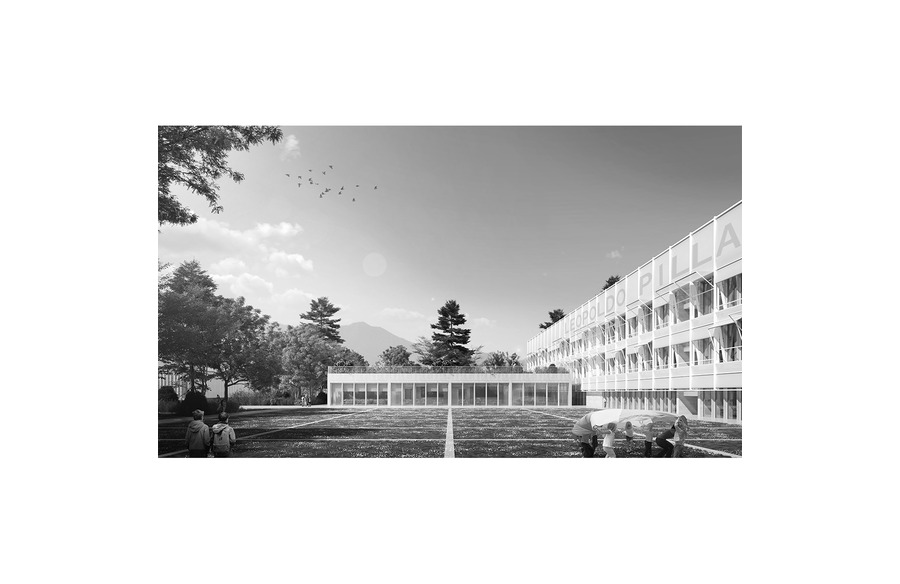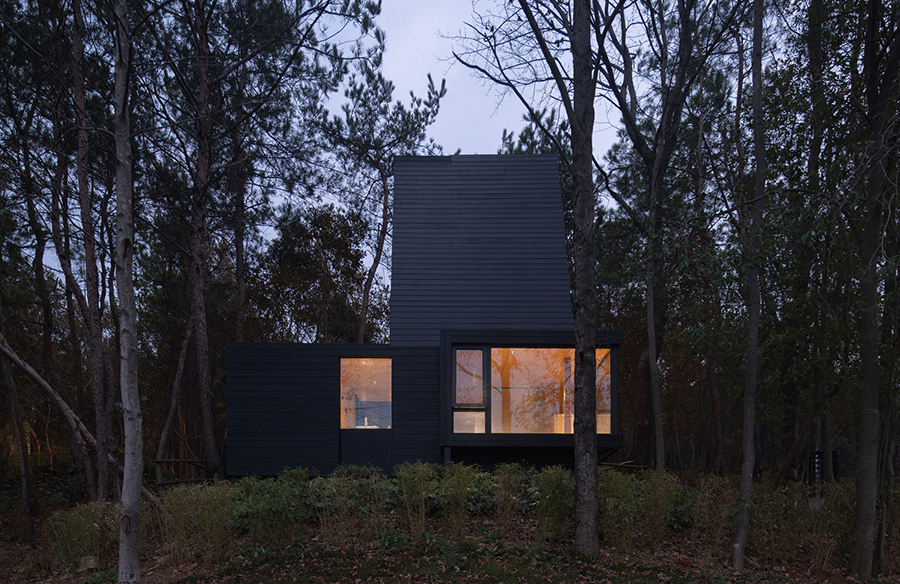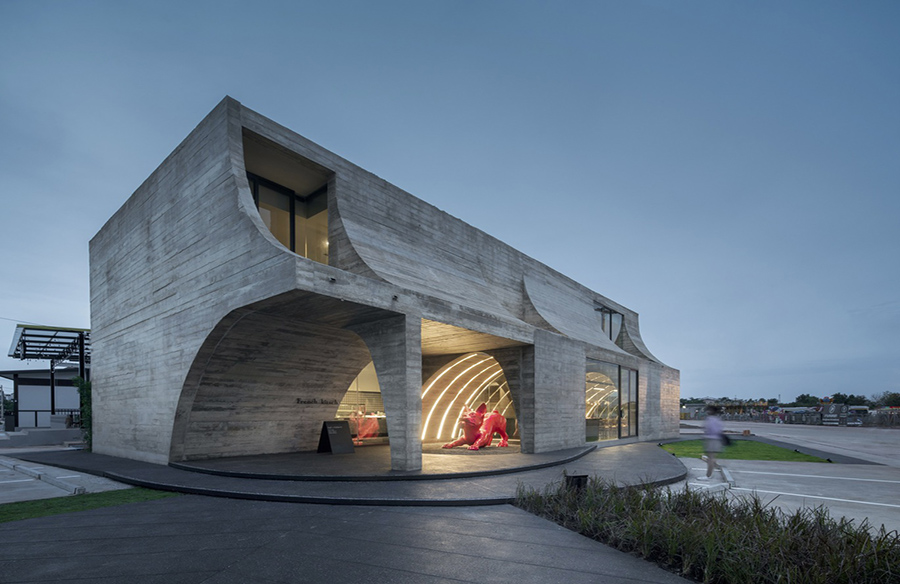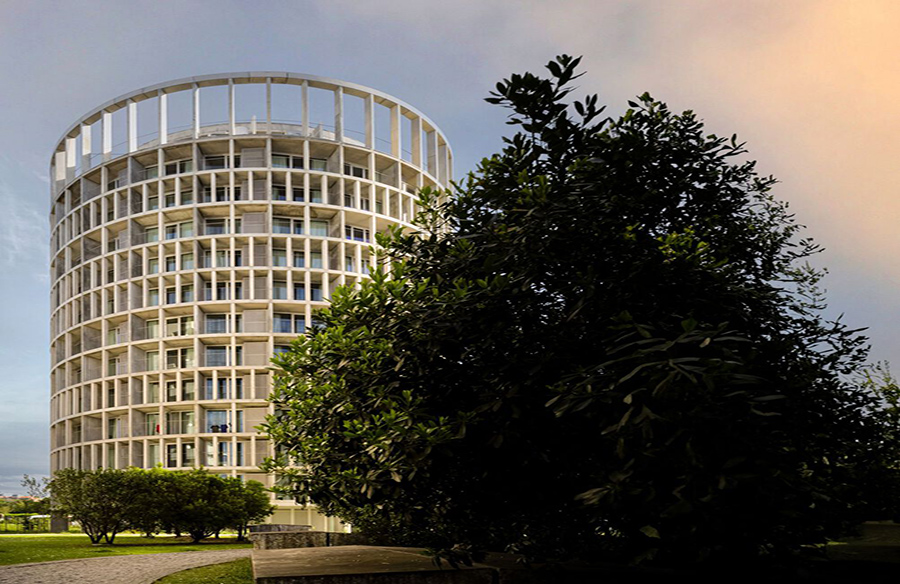Urban Renewal Jacques Sempé School Complex
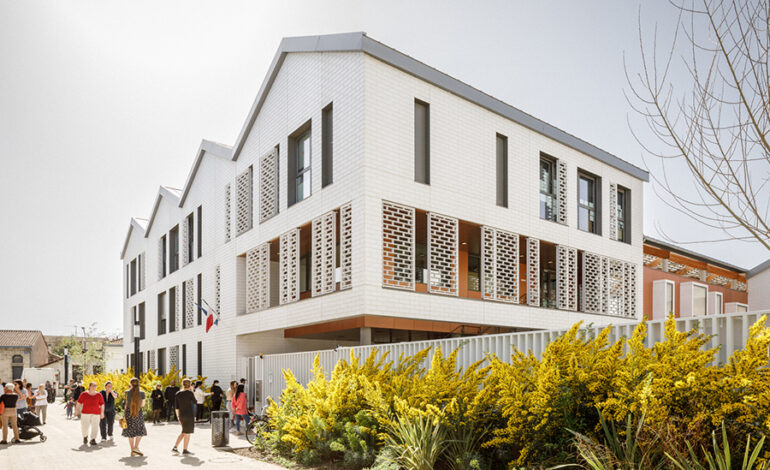
Contributing to Urban Renewal
Situated in the vibrant “Bassins à Flots” district, the Jacques Sempé school complex plays a pivotal role in the urban renewal of the area. Comprising 15 classes (nursery and primary), a leisure center, and official housing, the complex revitalizes the neighborhood, which boasts an industrial past.
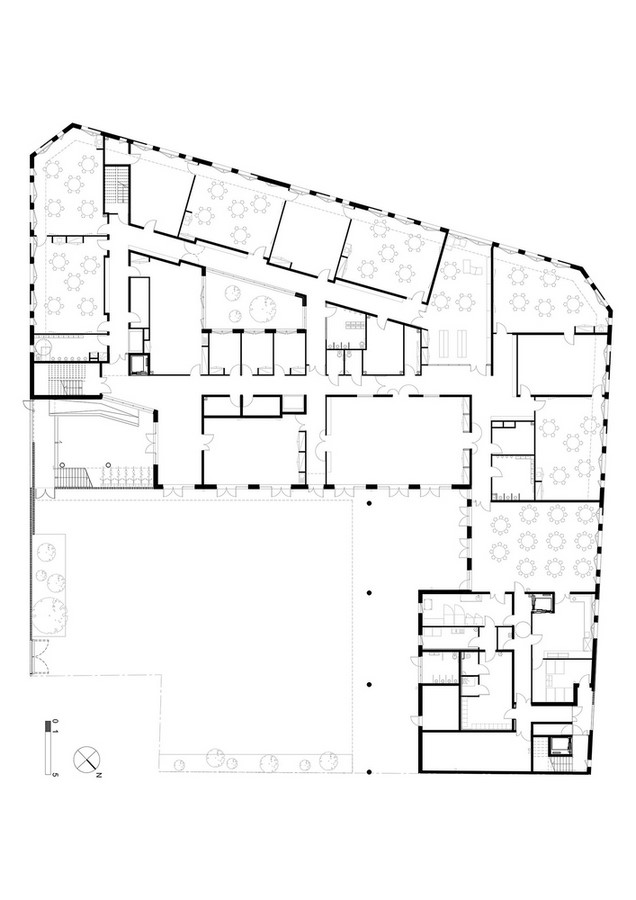
Innovative Design Solutions
Despite the constrained plot size, the complex spans 2,766 m2 across three levels. The kindergarten, housing seven classes, occupies the ground floor, while the elementary school, with eight classes, spans the first and second floors. This vertical arrangement fosters a playful dialogue between spaces, creating dynamic volumes and encouraging interaction between the schools.
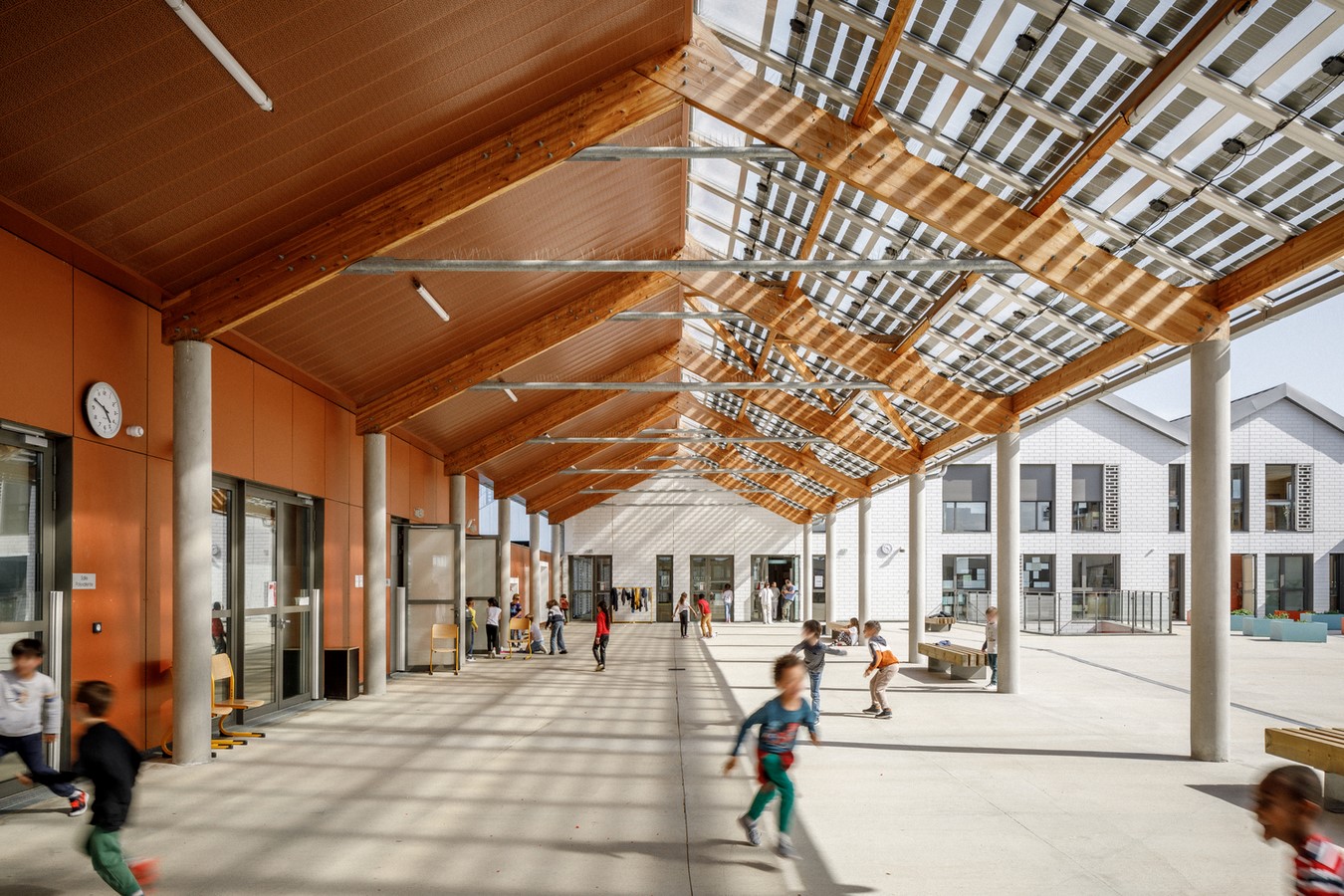
Integration and Communication
A transparent entrance porch provides access to both schools, fostering constant communication between them. The separation between the upper and lower courtyards is bridged by a wall with articulated glass boxes, allowing children to interact visually. The architecture emphasizes light, voids, and solids, resulting in airy, comfortable, and inviting spaces.

Industrial Aesthetic
The design draws inspiration from the district’s industrial heritage, incorporating elements such as bricks, metal, and sheds. Facades feature prefabricated insulated concrete walls arranged in a matrix resembling a brick wall. The double-height porch is accentuated with mesh treatment, while the roof mimics the template of hangar roofs. The first-floor playground boasts a generous courtyard covered with photovoltaic panels.
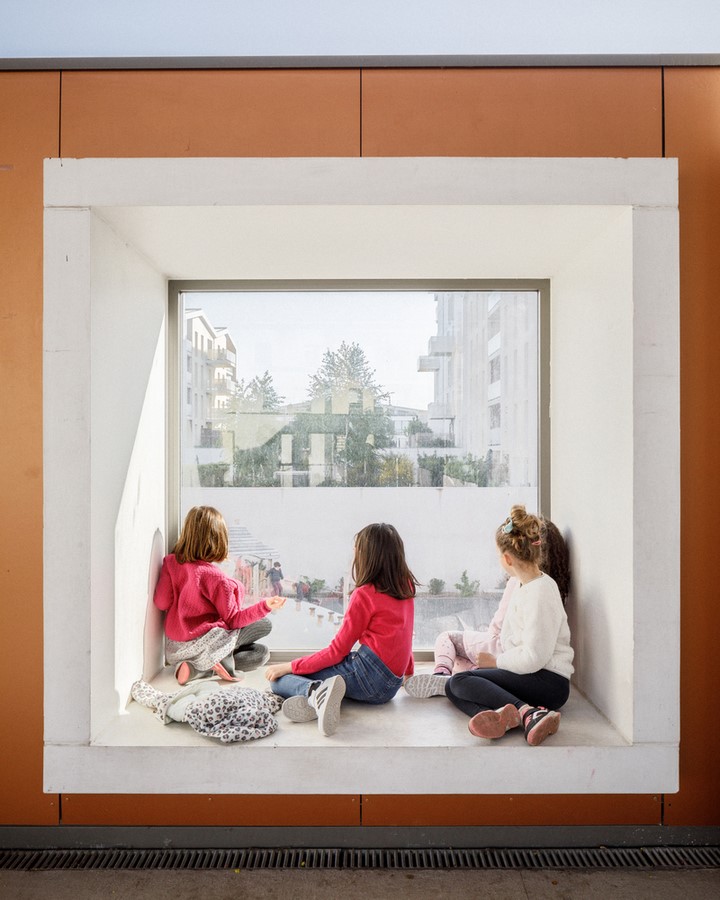

A Landmark for Community
Designed as a vibrant hub for life, learning, and community engagement, the Jacques Sempé school complex fosters ties between children and serves as a landmark in the rapidly evolving district. With its thoughtful design and innovative programming, the project reflects a specific context and contributes to the ongoing transformation of the neighborhood.
